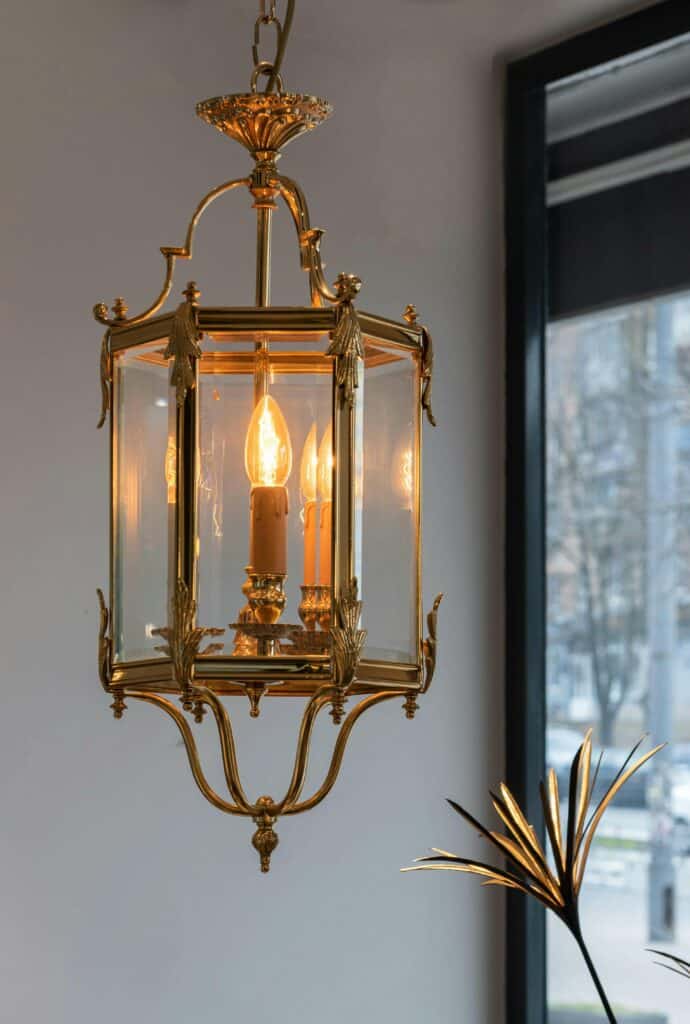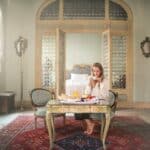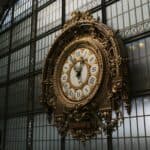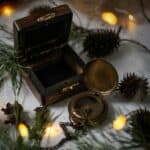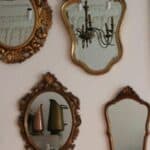Antique lighting is a brilliant way of adding timeless beauty, character, and warmth to your home. Whether you're drawn to the opulence of Victorian chandeliers or the rustic charm of early 20th-century industrial lamps, antique lighting offers a broad spectrum of styles to suit various interior designs. If you’re looking to incorporate antique and vintage lighting into your home, this guide explores the history, types, and tips for choosing lighting, as well as how to blend it seamlessly with contemporary decor.
Unique Charm and Warmth
Antique lighting brings a unique charm to your home that modern style lighting often lacks. Lighting goes far beyond just illuminating a space; it’s about creating ambiance, warmth and creating a welcoming and comfortable environment for all. Lighting has the power to instantly change the atmosphere in the room and antique pieces are not only a statement focal piece but allow reflection of the craftsmanship and design trends of its time.
The materials used in antique vintage lighting, such as brass, wrought iron, and hand-blown glass, often have a patina that adds to their warm charm. Unlike mass-produced lighting fixtures, antique lights are often one-of-a-kind or part of a small production, offering a sense of exclusivity.
Popular Styles of Antique Lighting
Victorian Lighting (1837–1901)
The Victorian era is known for its opulence and grandeur. Lighting from this period often featured intricate details, heavy use of brass, and elaborate designs, including gas-powered or oil-burning lamps converted to electric. Common fixtures include large chandeliers, ornate sconces, and kerosene lamps with frosted or etched glass shades.
- Where to use it: Victorian chandeliers are perfect for formal dining rooms or entryways. Wall sconces with ornate designs can elevate the feel of living rooms or hallways.
Art Nouveau Lighting (1890–1910)
Art Nouveau lighting is characterised by its organic forms, often inspired by nature. You’ll find fixtures with flowing lines, floral motifs, and the use of materials like glass and bronze. Tiffany-style lamps are one of the most iconic examples from this period, with their colourful stained-glass shades and intricate metalwork.
- Where to use it: These pieces work well in spaces where you want to create a romantic, ethereal atmosphere, such as bedrooms or sitting areas.
Art Deco Lighting (1920–1939)
In contrast to the fluidity of Art Nouveau, Art Deco lighting is defined by bold geometric patterns, sharp angles, and a focus on modern materials like chrome, steel, and glass. Art Deco pieces are often sleek and streamlined, reflecting the optimism and luxury of the Jazz Age.
- Where to use it: Art Deco fixtures make a bold statement in living rooms, offices, or even kitchens. Their sleek design can complement modern furnishings while adding a vintage twist.
Mid-Century Modern Lighting (1940–1970)
Mid-century modern lighting is known for its minimalist designs and functionality. The style often features clean lines, organic curves, and the use of materials like teak, brass, and glass. Pendant lights, sputnik chandeliers, and floor lamps from this period are highly sought after for their understated elegance.
- Where to use it: This style blends seamlessly with modern interiors. Consider adding a mid-century modern fixture in your dining room or living room for a touch of retro flair.
Industrial Lighting (1900–1950s)
Initially used in factories and warehouses, industrial lighting has become a popular style in modern homes. These fixtures are typically made from rugged materials like steel, iron, and copper, and feature utilitarian designs. Exposed bulbs, caged shades, and pulley systems are hallmarks of this style.
- Where to use it: Industrial lighting works well in kitchens, bathrooms, and home offices. Its raw, mechanical look adds an edgy, contemporary feel to any space.
How to Choose the Right Antique Lighting
When selecting antique lighting, there are several factors to consider:
Proportion and Placement
Consider the scale of the light fixture in relation to the room. A large Victorian chandelier, for example, might overwhelm a small dining room, whereas a delicate Art Nouveau pendant could look lost in a large foyer. Make sure the fixture complements the size of the space and the height of the ceiling.
Compatibility with Modern Decor
While antique lighting can work in almost any setting, it's important to strike a balance. If your home has a modern aesthetic, a few well-placed antique fixtures can add contrast and warmth. For example, an industrial pendant light could look stunning in a minimalist kitchen, or a pair of mid-century sconces could elevate a contemporary living room.
Layering Light
When incorporating antique and vintage lighting, don't rely on it as the sole light source in a room. Antique fixtures often have lower wattage capabilities or may not provide as much light as modern fixtures. Layer your lighting by combining antique pieces with other sources of light, such as recessed lighting, table lamps, or floor lamps, to create a balanced and functional space.
Condition
It’s also important to assess the condition of your lighting. Antique fixtures may need to be rewired to meet modern electrical standards. If you're buying a fixture that was originally gas or kerosene, it should be professionally converted to electricity. At Village Vintage, we can advise of your best next steps in this instance.
Antique Lighting at Village Vintage
Tiffany Style Dragonfly Table Lamp: This vintage Tiffany style table lamp in the famous Dragonfly pattern, is in excellent condition. With its beautiful array of colours, the heavy shade is all glass with the Dragonfly pattern detailed and complex. Raised on a tapering patinated bronze style base with organic foliage decoration. 44cm in height and 30 cm shade diameter.
Mid-Century Stone and Silver Lamp: In excellent condition, this striking lamp is deep orange in colour and made from exotic polished hardstones. The thick shade and small areas of the base are decorated in highly detailed silver mounts (probably solid silver, typical of the Moroccan area where we believe this originated), the base is also a solid one-piece casting in silver. This lamp stands at 67cm in height.
Vintage Herbert Terry Anglepoise Desk Lamp: An iconic piece and an important piece of history, this Herbert Terry desk lamp was trade marked by Terry as the name synonymous with this type of lamp, ‘Anglepoise’. Versatile, useful and beautiful, this is completely original and comes with the sought after ‘two step’ base, great for any room in the house. In original condition, standing at 90cm in height.
Get in Touch
If you’re looking for an antique piece to light up the room, we’d love to help! At Village Vintage, we’re passionate about delivering the best results for our valued customers. Simply get in touch with us by filling out our contact form and one of our friendly team will get back to you.

